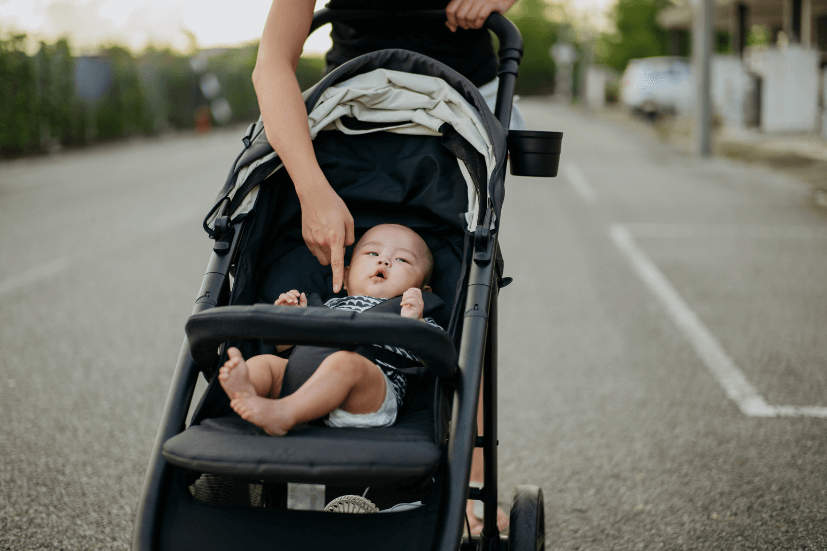Are you a new mum, or are due soon and wondering how soon you can engage in post-pregnancy exercise? There are many benefits to exercising after giving birth. Besides helping you lose any extra weight that you have gained during pregnancy, exercising can help with:
- Strengthening your abdominal muscles
- Boosting your energy
- Preventing postpartum depression
- Promoting better sleep
- Relieving stress
But that doesn’t mean you should rush to put on your exercise gear and go full steam with exercising after delivery immediately. There are several risks in exercising too soon postpartum, such as improper healing leading to additional scarring. You need to give your body enough time to heal from pregnancy, and that can only be achieved with time.
Your Postpartum Recovery Timeline
Being pregnant changes your body in many ways and this doesn’t end immediately after giving birth. Give your postpartum body time to adjust and recover before returning to the thick of things. How soon you can engage in postpartum exercise depends on your fitness level before giving birth, your mode of delivery and how easily it went.
While postpartum recovery varies from one mother to another, there’s a general timeline that can guide you on when it is safe to start your post-pregnancy exercise journey:
The First Six Weeks
After giving birth, your body undergoes physical and hormonal changes. This could include back pain, a weaker pelvic floor, and even diastasis recti – a condition where your abdominal muscles separate.
The initial six weeks post-delivery are primarily for rest and recovery. During this period, light activities such as walking can be incorporated, forming the foundation of your postpartum workout. Focus on reconnecting with your body, and remember that even post-pregnancy exercises should be initiated with caution.
Six to Twelve Weeks
By six weeks, you may gradually introduce more structured post-pregnancy exercises. This is when your body starts to adapt, and more dynamic movements can be safely enjoyed, always in line with your healthcare provider's advice.
Beyond Three Months
Once you cross the three-month threshold, your postnatal workout can include more exercises. If your recovery is on track, this is the time to build up your strength and endurance through various post-pregnancy exercises.
It is recommended that you consult your gynae on your condition in the weeks after your delivery before engaging in any new exercise activities.
Exercising After a Vaginal Birth
If you generally had a smooth and healthy pregnancy, and had a normal vaginal delivery, chances are you should be able to start exercising soon after birth. This could be as soon as a few days after birth, or whenever you feel physically ready.
If so, start slow with a gentle walk and gradually increase your pace over time. However, again, it is best to obtain your gynae’s clearance before embarking on any form of physical activity.
Exercising After a Caesarean Birth
A caesarean is considered a major surgery and mothers who went through caesarean birth will generally need at least six weeks to heal before they can start exercising. You might be able to start on simple pelvic floor exercises like kegels first but avoid more intense abdominal muscle activities like sit-ups and crunches or lifting heavy weights.
Consider starting with low impact exercises such as walking after six to eight weeks and avoid any high impact exercises until around three to four months postpartum.
Listen to your body and take things slow. At any point, stop if you feel discomfort and whenever you’re unsure, consult your gynae before engaging in exercise.
It's important to be patient and do postpartum exercises at your own pace.
Do Postpartum Exercises at Your Own Pace
Everybody’s motherhood journey is different, and it bears repeating to take things at your own pace. If you are rushing your recovery or diving headlong into exercise, you may do more harm than good.
Here are some things to look for as you start your postpartum exercises.
Monitor if You’re Still Experiencing Post-Delivery Bleeding
If your bleeding becomes heavier, or restarts after it has stopped, this could be a sign that your body needs more time to heal. Take the time to rest because continued bleeding can lead to a drop in blood pressure and postpartum haemorrhage can be potentially life threatening.
Integrate Warm-Up and Cool-Down Routines
Before you jump into your postnatal exercise routine, be sure to begin each session with a proper warm-up. This gentle start helps to loosen the joints and increase blood flow to the muscles, reducing the risk of strain or injury. For new mothers, begin with simple stretches or a light walk to get your blood flowing.
After your workout, it's just as crucial to cool down. After exercise, the heart rate is elevated, and muscles are activated; a cool-down helps to reduce the heart rate, start the recovery process for the muscles, and reduce the buildup of lactic acid, which can lead to muscle stiffness. Both warm-up and cool-down periods should last at least five to ten minutes to ensure the body is adequately prepared and recovered.
Go Easy on Your Joints
Your body produces a hormone called Relaxin that helps to loosen your ligaments and joints during childbirth, but this can stay in your body for up to six months postpartum. Be mindful of your wobbly joints and avoid jerky movements when you first start your postpartum exercises, or you could just end up spraining something!
Get the All-Clear for Diastasis Recti before Engaging in Ab Exercises
Check if you have diastasis recti with your gynae and obtain their clearance before engaging in abdominal exercises, or you could risk worsening your condition. Not only does this hamper your rehabilitation process, but you might also suffer long-term effects like a weak core, lower back pain and even pelvic floor dysfunction.
Avoid Dehydration
Drink plenty of fluids pre and post exercise to ensure you are well-hydrated, especially if you are breastfeeding. After all, your body already requires a higher amount of fluids when you’re breastfeeding. When this is made worse by not drinking enough after exercise, this can impact your milk supply and lead to other side effects like headaches, fatigue, muscle cramps or nausea — things that an already exhausted mum can do without.
Types of Post-Pregnancy Exercises
Once you’re ready to start your postpartum exercises, you can engage in light to moderate aerobic activity or muscle-strengthening exercises. Here are some ideas to help you get started.
Pelvic Floor Exercises
Most women suffer from a loose pelvic floor after pregnancy and it’s important that you strengthen this muscle to prevent issues like a leaky bladder. Some exercises you can do include kegels, glute bridges and kneeling pelvic tilts.
Walking
Walking is a great way to get your fitness back at your own pace. Start slow with a leisurely walk before increasing your pace, distance of the walks or increasing the intensity by walking. At the very least, a change in scenery will serve as a mood-booster after a tiring day.
Swimming
Swimming is a cardiovascular exercise that is easy on the joints and pelvic floor while helping to strengthen your core and back muscles. It’s a great alternative if you are still healing and need to avoid high impact cardiovascular exercises. But make sure you’re no longer bleeding before you start swimming!
Gentle Ab Exercises
Again, check with your gynae if you have diastasis recti before engaging in abdominal exercises. Start slow and gentle with exercises like deep belly breathing and abdominal bracing before progressing to head lifts, shoulder lifts and curl-ups. Be careful not to overdo it or you could end up delaying your recovery.
Yoga or Pilates
Gentle postpartum yoga or pilates can help you strengthen your joints and pelvic floor. It can also help you stretch out the aches that come with breastfeeding and baby holding. Some examples include the Cat-Cow and Happy Baby yoga poses, which are great for stretching out the back and hips.
Other Low Impact and Lightweight Exercises
Ready to do more? Don’t neglect upper body exercises like bicep curls, lateral raises or shoulder presses that help you gain arm strength. As a bonus, you can do such exercises while sitting down. Other exercises such as squats, lunges or cycling can also help you regain your fitness at your own pace.
Exercises for Specific Postpartum Challenges
When tailoring exercises for specific postpartum challenges, it's crucial to incorporate movements that accommodate the conditions some new mothers may face. Here are some considerations:
- Diastasis recti: This condition, where the abdominal muscles separate during pregnancy, requires exercises to gently bring the muscles back together. Incorporating toe taps and pelvic tilts that avoid direct pressure on the abdominal gap can help in recovery.
- Pelvic floor weakness: The pelvic floor can be weakened after childbirth, so kegel exercises are essential to regain strength in this area.
- Back pain: New mothers often experience back pain post-delivery. Gentle stretching and strengthening exercises like the child’s pose, side stretches, and back rolls can alleviate discomfort and strengthen back muscles.
- C-section recovery: For those recovering from a caesarean delivery, exercises need to be particularly gentle and focused on healing. Leg slides and seated kegels can be introduced gradually as the body heals.
- Breastfeeding posture-related aches: Since breastfeeding can contribute to back and shoulder strain, incorporating shoulder rotations, shoulder blade squeezes, and other postpartum exercises can help alleviate tension.
That being said, it is important for new mothers to consult with healthcare providers to determine the appropriate post-pregnancy exercises for their individual recovery, ensuring they are not only safe but effective for the specific challenges they face.
Nutrition and Hydration Tips for Postpartum Exercise
Amid your postpartum exercise regimen, don’t forget to prioritise nutrition and hydration. As your body is recovering and you’re potentially breastfeeding, your need for water and nutrients is greater. For starters, aim to drink at least eight to ten glasses of water a day, and always keep a bottle of water handy during your workouts.
When it comes to nutrition, balanced meals with a mix of protein, carbohydrates, and healthy fats will give you the energy needed for effective postpartum workouts and recovery. Protein is particularly important after a workout as it aids in the repair of exercise-induced muscle damage.
Don't forget to include plenty of fibre-rich fruits and vegetables in your diet to aid digestion, which can sometimes be sluggish postpartum. Additionally, iron-rich foods can help replenish your body, especially if you experienced significant blood loss during delivery.
Combining these nutritional elements with your postnatal exercise routine will help you to regain your strength and energy, contributing to a more positive and efficient recovery process.
Take Care of Yourself Post-Pregnancy
Engaging in postnatal exercise is not only beneficial for the body but also for the mind. Exercise can be an effective way to cope with the emotional challenges that come with being a new parent. Before you start on your postpartum exercises, know that your body needs time to heal.
Just as it adapted to support your pregnancy, it needs a period of adjustment to recover. Take all the time you need and listen to your body as you work on getting it back into shape. Working yourself too hard before you are ready will only lead to increased risk of injury. Patience is, after all, an essential trait in motherhood, and what better way to develop it than giving your body the time it needs.
With PA Assurance, you can take that journey without worry. You may receive coverage for chiropractors and TCM treatments in the event of an accident, including sports injury1. Embrace your post-pregnancy fitness goals with the assurance that your well-being is protected.
1 Coverage for sports injury is subject to the terms and conditions of the policy. Please refer to the policy conditions for the full list of exclusions.
This article is meant purely for informational purposes and does not constitute an offer, recommendation, solicitation or advise to buy or sell any product(s). It should not be relied upon as financial advice. The precise terms, conditions and exclusions of any Income Insurance products mentioned are specified in their respective policy contracts. Please seek independent financial advice before making any decision.
These policies are protected under the Policy Owners’ Protection Scheme which is administered by the Singapore Deposit Insurance Corporation (SDIC). Coverage for your policy is automatic and no further action is required from you. For more information on the types of benefits that are covered under the scheme as well as the limits of coverage, where applicable, please contact Income Insurance or visit the GIA/LIA or SDIC websites (www.gia.org.sg or www.lia.org.sg or www.sdic.org.sg).
This advertisement has not been reviewed by the Monetary Authority of Singapore.








